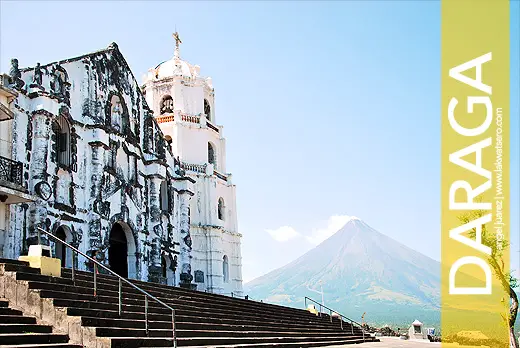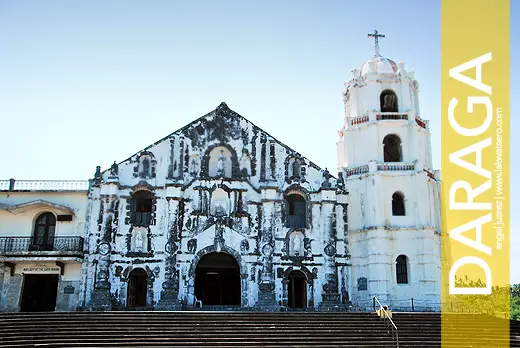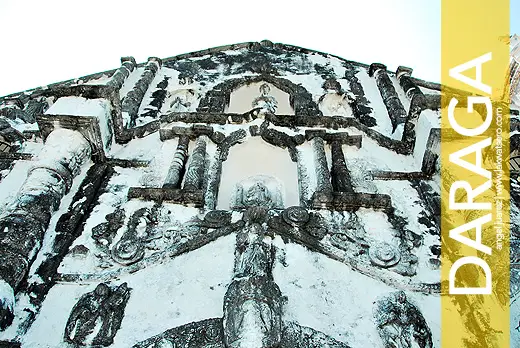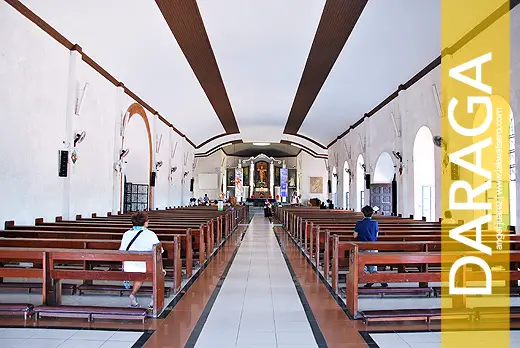The almost four centuries of Spanish rule in the Philippines left us with a lot of influences and legacies. This include some grand Catholic churches. In the province of Albay and even in the entire Bicol Region, one that really stands out is Daraga Church.

Different versions of history tell us of the church’s colorful past. Daraga then was just a small village of Budiao, the name given in 1500’s by Franciscan missionaries in this settlement located in the southern slopes of Mayon Volcano. Budiao was renamed to Cagsawa when the townsfolk resettled to a different site due to impending threat of the volcano’s eruption. They built a massive church structure made of stone in the new site which we know today as the ruined Cagsawa Church.
By late 1700’s, some parishioners feared another eruption of the Mayon Volcano and requested permission from the Spanish government to establish a new settlement south of Cagsawa, atop a hill overlooking the Mayon Volcano. They named their new village Daraga and built a church made of woods and light materials.
By 1772, they started building a stone church that was completed in 1773. But during the eruption of Mayon Volcano in 1814, Cagsawa Church was destroyed, only the facade and the bell tower survived. With heavily damaged church, parishioners of Cagsawa transferred to Daraga that eventually became a separate parish. In 1854, the church was dedicated to Nuestra Señora De La Porteria or Our Lady of the Gate.

The church bore the brunt of the World War II when it was used as headquarter and garrison of the Japanese Imperial Army and eventually bombarded by the Americans. It was loosely renovated after the war and with the absence of renovation plans, some parts of the church has been altered and loss its significance. The church was then reconstructed from 1971 to 1973 to retain its old form and to what we see now.

The present day facade of Nuestra Señora De La Porteria Church of Daraga is still the original one built in 1773 out of volcanic rocks. It is one of few remaining structures in Churrigueresque Baroque style. The facade is and characterized by four spiral columns known as Solomonic columns or salmonicas. Engraved on it are images of saints such as of Saints Matthew, John, Luke and Mark. There are also various religious seals like the coats of arms of the Franciscan order, Pope’s tiara and keys, and the five wounds or stigmata of Saint Francis. A Latin inscription “Bene fundata est domus Domini supra firmam petram” (translated as “Well founded is the house of the Lord on firm rock”) is also carved above the arched entrance.
A four-level octagonal belfry with carved images of the twelve apostles is attached on its northern side while the convent is on the other side. Like the facade, the church’s wall fronting Mayon Volcano is built with carvings and salmonicas and supported by thick buttresses. The white painting on its exterior is effect of lime washing or “palitada” to preserve the structure. Inside the church, one will notice its general simplicity which is a complete opposite of its grand exterior.

Nuestra Señora De La Porteria Church of Daraga was declared a National Cultural Treasure by the National Museum on October 29, 2007. Full restoration of the parish convent, function areas and perimeter walls followed afterwards with the support of the National Commission on Culture and the Arts (NCCA) and supervised by the National Museum and Parish Commission for Temporalities. On October 16, 2008, the National Historical Commission of the Philippines declared it as a National Historical Landmark.
*With information from http://daragaparish.tripod.com/